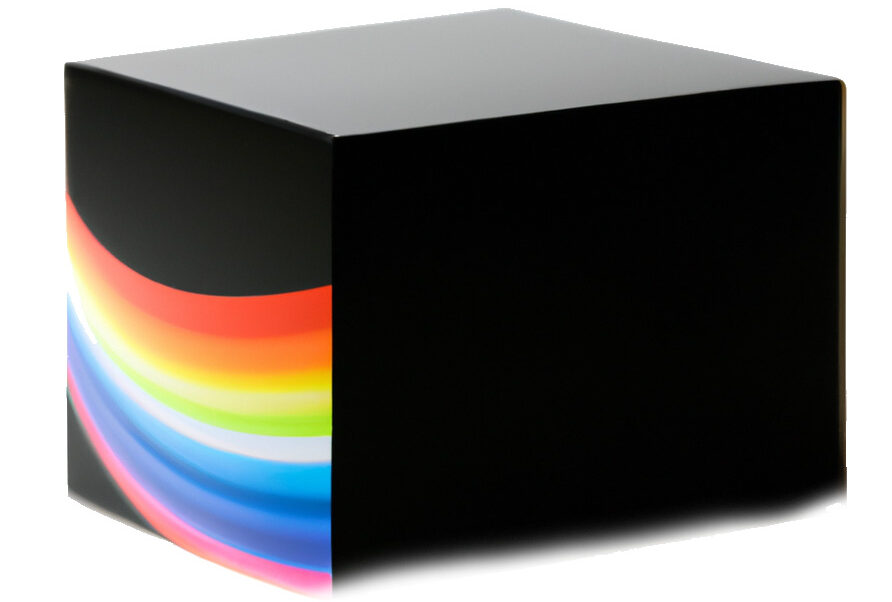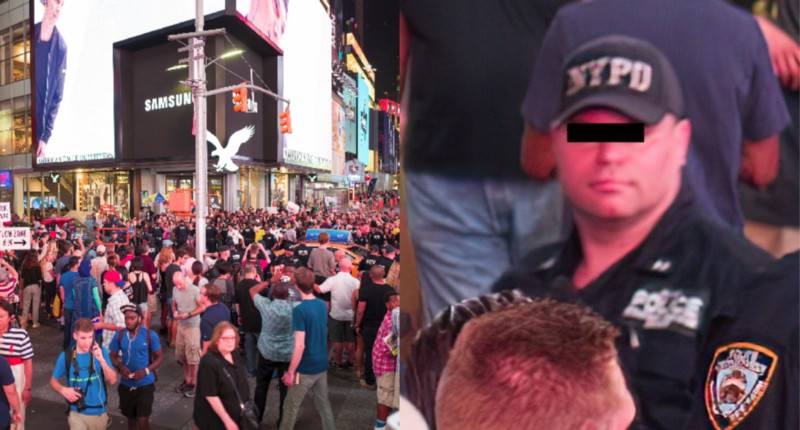We all know the scene. Two detectives on a cop show stand in a dimly lit room filled with monitors, reviewing surveillance images. A tech guy (yes, it’s almost always a guy) queues up image after image as the detectives look on, squinting at the screen in concentration. “There’s nothing here!” one detective insists. They’re about to give up, when the other detective (our hero) shouts, “Wait!”
Everyone stops. “Zoom in there!” the detective says. The tech guy obligingly zooms in on a grainy corner of the image. “Enhance that!” the detective intones. The tech guy taps some keys, mutters something about algorithms, and suddenly the image comes into focus, revealing some tiny, significant detail. The case is cracked wide open!
This scene is a crime drama cliché so pervasive that it has inspired its own meme video with nearly a million views.
https://youtube.com/watch?v=LhF_56SxrGk%3Ffeature%3Doembed
Scenes like these drive real tech people bananas, because “zoom and enhance” has always seemed like an impossible fantasy. Until now.
Thanks to two recent innovations, zoom and enhance is finally here. It has the potential to radically change police surveillance, often in concerning ways — or at least help you bring back your photos from the early ’00s.
The first innovation behind real-life zoom and enhance comes from the world of photography. Until recently, photographers had two primary options for digital cameras: professional DSLRs like the Nikon D series, or cheap compact consumer cameras, like the kind you’d use for birthday or travel snapshots.
DSLRs take great photos, but they’re bulky and conspicuous and can be hard to operate — not a great combo for surveillance work. Compact cameras rarely have the quality necessary for surveillance professionals.
That all began to change around 2015, with the rise of mirrorless cameras. These cameras have the tiny form factor of a compact camera, but thanks to advances in imaging chips driven in part by smartphones, they pack in the same high-quality image sensors usually found in a DSLR.
Increasingly, they also borrow complex image processing software from the smartphone world, further enhancing their capabilities. And crucially, they allow for the use of professional lenses — easily the most important factor for taking high-quality photos.
For a few thousand dollars, a surveillance professional or police force can now purchase tiny, easy-to-use cameras that take better photos than the best professional cameras from just a few years ago.
The end result is a tiny camera that you can carry and use inconspicuously, while taking extremely detailed, high-resolution photos. The Q, a mirrorless camera from legendary German camera maker Leica, largely kicked off the trend.
The latest Q model weighs just 1.4 pounds and takes 47-megapixel photos through an obscenely crisp lens that sees more detail than the human eye. With an ISO rating of 50,000 (15 times higher than that achieved by the fastest analog films), it can also essentially see in the dark.

Lower-priced competitors, like the Sony Alpha, have since emerged. For a few thousand dollars, a surveillance professional or police force can now purchase tiny, easy-to-use cameras that take better photos than the best professional cameras from just a few years ago. Zooming into photos taken on these cameras can sometimes feel like using zoom and enhance. The detail they capture — especially paired with modern software — is remarkable.
But combine mirrorless camera images with compressive sensing, and zoom and enhance is truly here. Compressive sensing allows you to massively enlarge an image without a major loss in quality. The tech has been around since the early 2000s, but it gained prominence in 2010 when researchers showed how it could be used to reconstruct an image of President Barack Obama using a tiny sample of randomly distributed pixels.
In 2017, Google showed how principles of compressive sensing could be combined with neural networks to reconstruct degraded or low-quality images in a process called A.I. super-resolution. The tech works by starting with sample images — often of faces or rooms — and deliberately messing them up by making them blurry, running them through a terrible JPEG compression system, and the like.
A neural network then looks at the degraded images, compares them to their high-quality counterparts, and learns how the two relate. Essentially, the network teaches itself all the ways that a digital image can degrade. Once it knows this, the process is reversed. The system is handed a low-quality or degraded image, and based on its training, it constructs a high-quality, undegraded version from scratch.
Though Google has since largely exited the field, A.I. super-resolution has taken off. Services like StockPhotos.com Upscaler allow users to upload a low-quality photograph and have it instantly upscaled 400% or more, often with minimal loss of quality.
Photoshop plugins have delivered similar tech to photographers, who use it to remove blurriness and sharpen images. My A.I.-driven photography company often uses the tech to upscale digital camera photos taken in the early 2000s, allowing even these low-quality early images to meet today’s standards for use in publications.
The tech, though, is also being used for surveillance. Quickly after its development, researchers began to show how the super-resolution could be used to upscale low-resolution surveillance photos or frames from surveillance videos. Others focused on using the tech for targeted applications, like license plate recognition. And many groups have focused on super-resolution for facial recognition images, going so far as to develop specialized algorithms for enhancing facial images.
Several vendors have integrated these algorithms into dedicated software products. Topaz Labs, in my experience, is the most advanced. Pair its Gigapixel AI product with the output of a modern mirrorless camera, and you’ve got zoom and enhance that rivals the imagined systems on shows like CSI.
Here, for example, is a photo of a Jamba Juice restaurant in Marin County, California, taken on my Leica Q mirrorless camera.
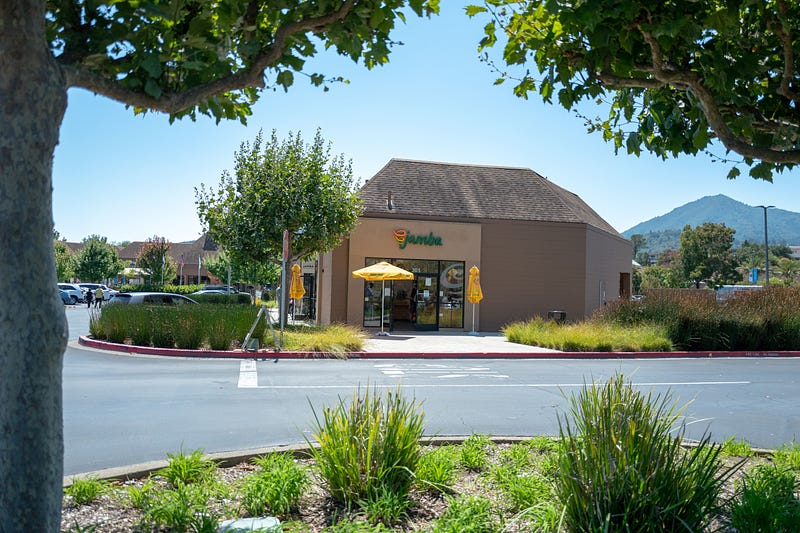
I took this from across a street, with the palm-sized camera hanging around my neck. I then ran the photo through Topaz’s Gigapixel AI software, upscaling it 400% and using the company’s proprietary face reconstruction and sharpening algorithms.
Zooming in to full size on the enhanced image, you can see some incredible detail. Through the restaurant’s front window, you can clearly see a patron waiting in line and examining a menu.
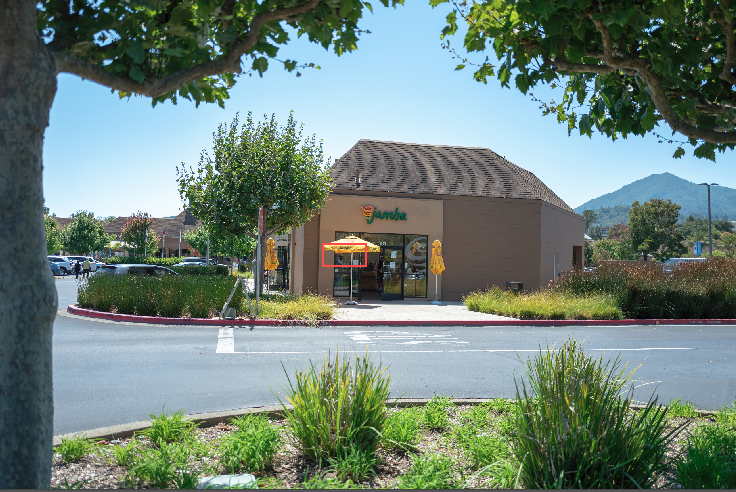

You can even see that he’s wearing a blue surgical mask. Great job staying safe, unknown smoothie man! Flyers posted on the door are also visible, including some of the graphics on the flyer. You can see patrons inside placing their orders.
Zooming and enhancing another part of the image, you can see the text on signs in the far background (“Jamba Curbside Pickup”) and how they’ve been attached to pillars using yellow tape. And in the far distance, you can see the mannequins in another nearby store and diners eating at outdoor tables.

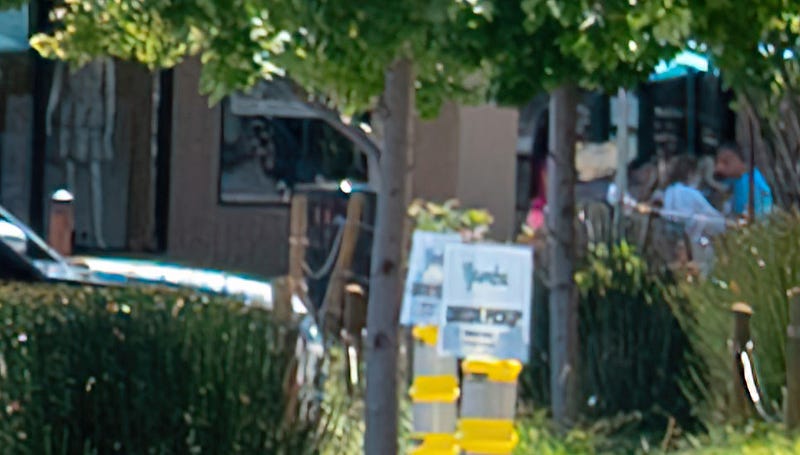
With more extreme zoom and a tweak to exposure, you can clearly make out the store’s signature Blendtec blenders on the counter inside.
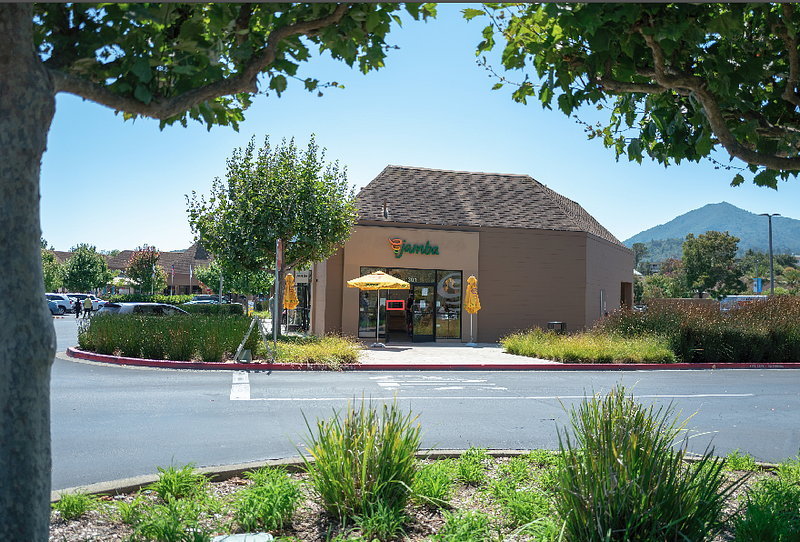
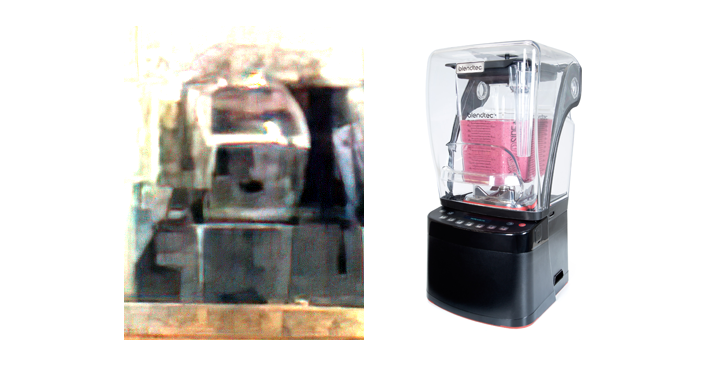
Blender identification, of course, is not the most groundbreaking use of a new technology. But when you apply zoom and enhance in a surveillance context, things get scary fast.
Here, for example, is a photo I took of a Black Lives Matter protest in Times Square in 2016.
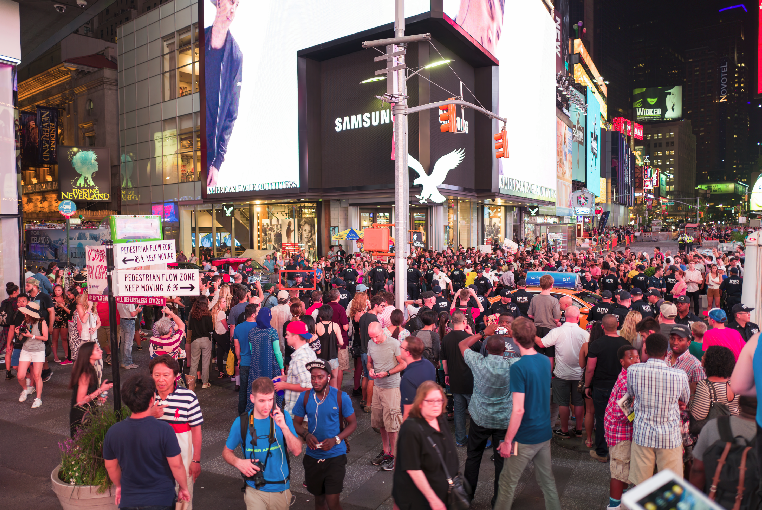
Applying zoom and enhance, you can clearly see the faces of police officers in the far back of the crowd. With facial reconstruction applied, these images would likely be good enough to find matches in a facial recognition database.
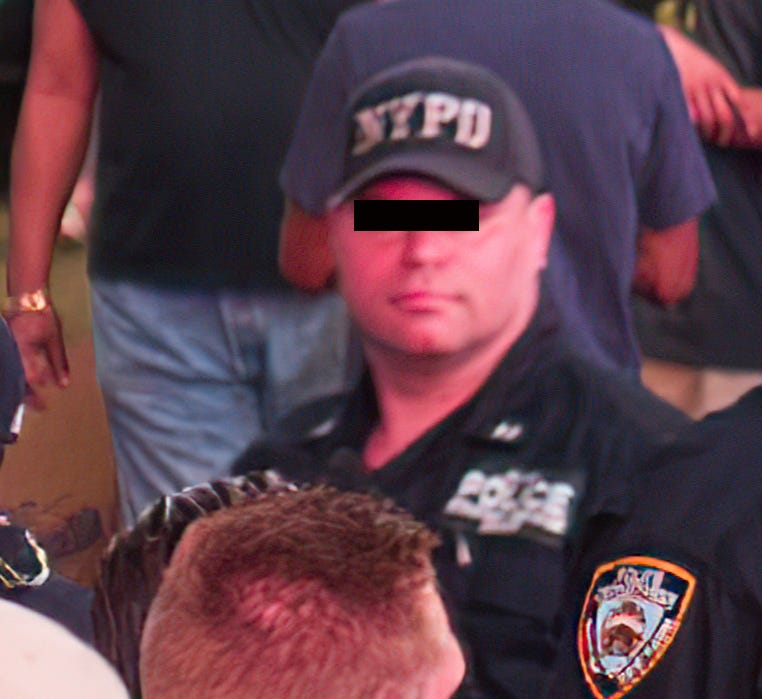
Combining this tech with facial recognition systems like Clearview AI would make it trivial to identify large numbers of people in a crowd of protesters. A plainclothes police officer or federal agent posing as a tourist could easily walk through a crowd of protesters while snapping photos on a tiny mirrorless camera. The photos could be run through a super-resolution system, enlarging them massively and enhancing the faces present.
Individual faces could then be pulled out of the image and run through a system like Clearview’s to identify every individual by name. Police forces and other agencies are reportedly already using A.I. to identify different actions (like breaking into a vehicle or loitering) and to search surveillance images for people based on their physical descriptions. It’s unclear if any are using super-resolution yet, but undoubtedly that will come. Face reconstruction tech will likely improve as well — many faces today still come out distorted when enhanced, but facial reconstruction errors will likely diminish with time.
We need to ensure that technologies like zoom and enhance are available to law enforcement when they’re truly needed. But we also need to make sure that they’re not abused.
As the tech improves, you might not even need a mirrorless camera or other high-quality cameras. Super-resolution may ultimately become good enough to perform zoom-and-enhance functions on the low-resolution output of a traditional surveillance camera, identifying every individual in a crowd using footage from traffic cams, surveillance cameras from a store or nearby home, or even a circling drone. It could also one day be applied to photos taken on a smartphone or even the low-resolution photos displayed on social media platforms like Instagram.
As with any new surveillance technology, ensuring responsible use of zoom and enhance is a matter of establishing the right laws and policies. The Fourth Amendment of the U.S. Constitution already provides protection against searches without a warrant. Courts have weighed issues of new tech in the past — for example, looking at whether surveillance with telephoto lenses violates the Fourth Amendment. They have generally ruled that widely available tech like zoom lenses can be used in many contexts, but specialized tech like radar that sees through walls cannot.
It’s not yet clear where zoom and enhance would fall on that spectrum. The technology might be viewed as just another version of the zoom lens on a traditional camera. But given its elements of artificial intelligence, courts might find that it’s too specialized of a technology to be mobilized without proper search warrants.
For now, the tech is too new for these precedents to have been established. As citizens, the best thing we can do is to be aware of its existence. If you’re at a protest or another sensitive event, assume that you’re being surveilled and photographed. Even if you don’t see someone with a professional-looking camera, authorities could still be capturing your image at a high enough quality to look you up using facial recognition and identify you by name.
We can also proactively inform lawmakers about which new technologies we’re comfortable with and which ones we’re not. Popular anger over facial recognition technologies led to a proposed bill to ban the use of this tech in policing. We need to ensure that technologies like zoom and enhance are available to law enforcement when they’re truly needed. But we also need to make sure that they’re not abused.
Much as science fiction did a good job of preparing us for space travel and computers, shows like CSI have done a good job of introducing us to the concept of zoom and enhance before it existed. But when you move beyond the imagined world of a good-guy cop fighting evil criminals, the real-world ethics of tech like zoom and enhance get blurry fast.
You can try Topaz for yourself, or use a consumer version from StockPhotos.com that’s free for your first 10 photos.
